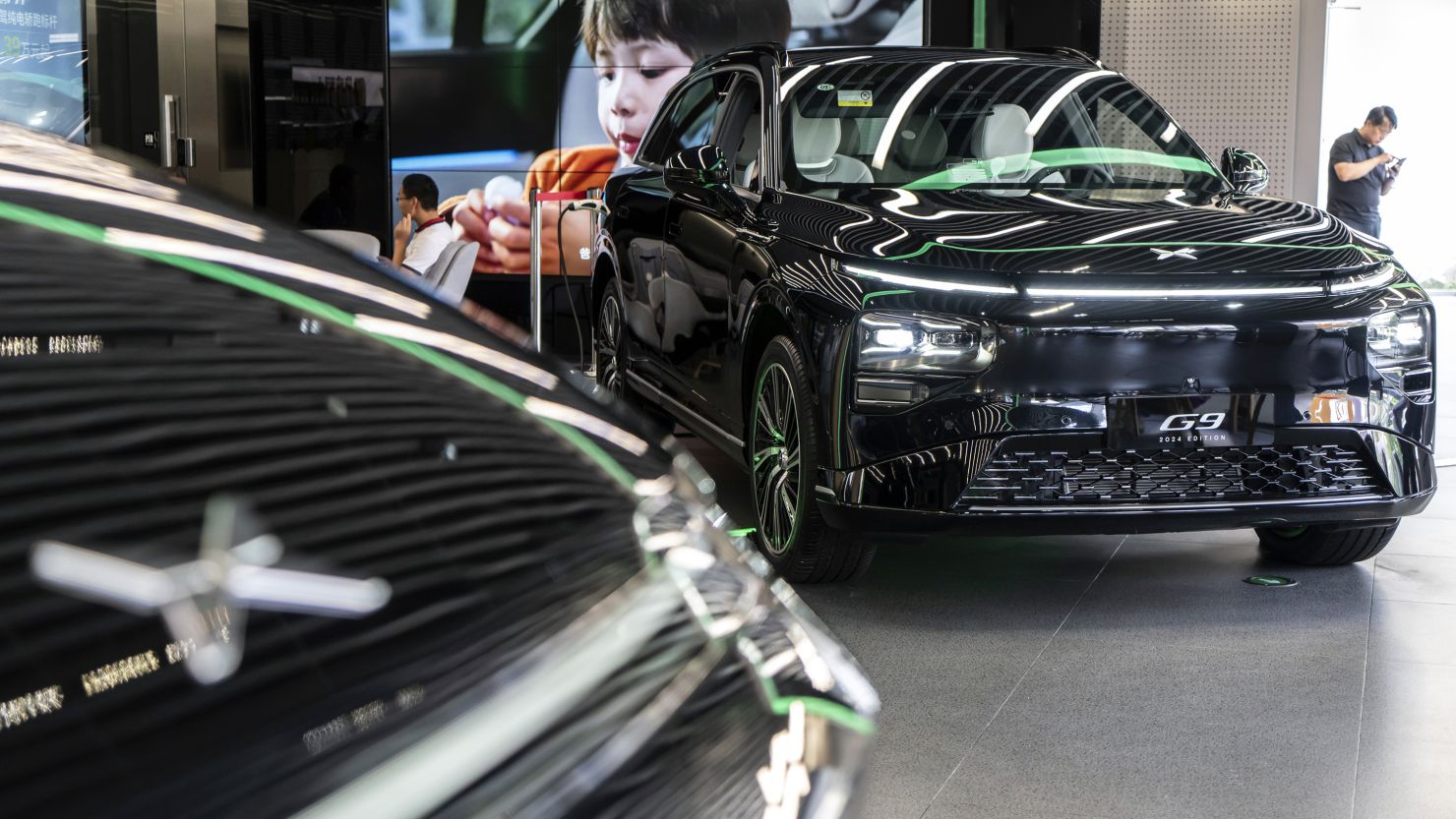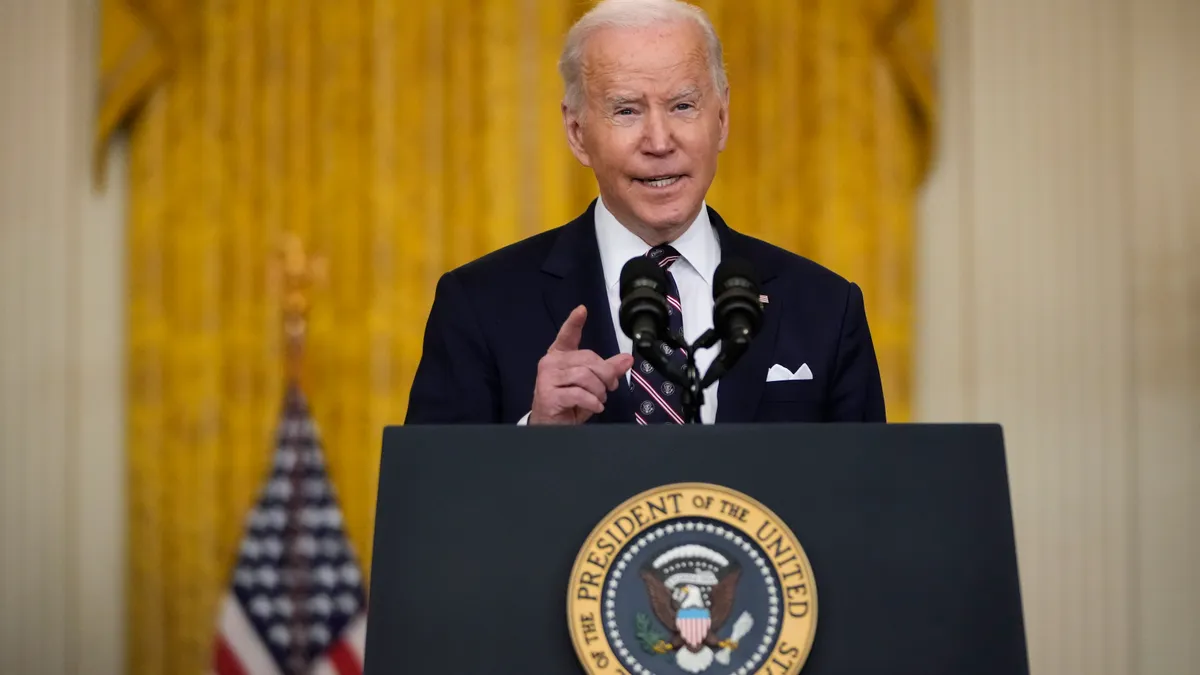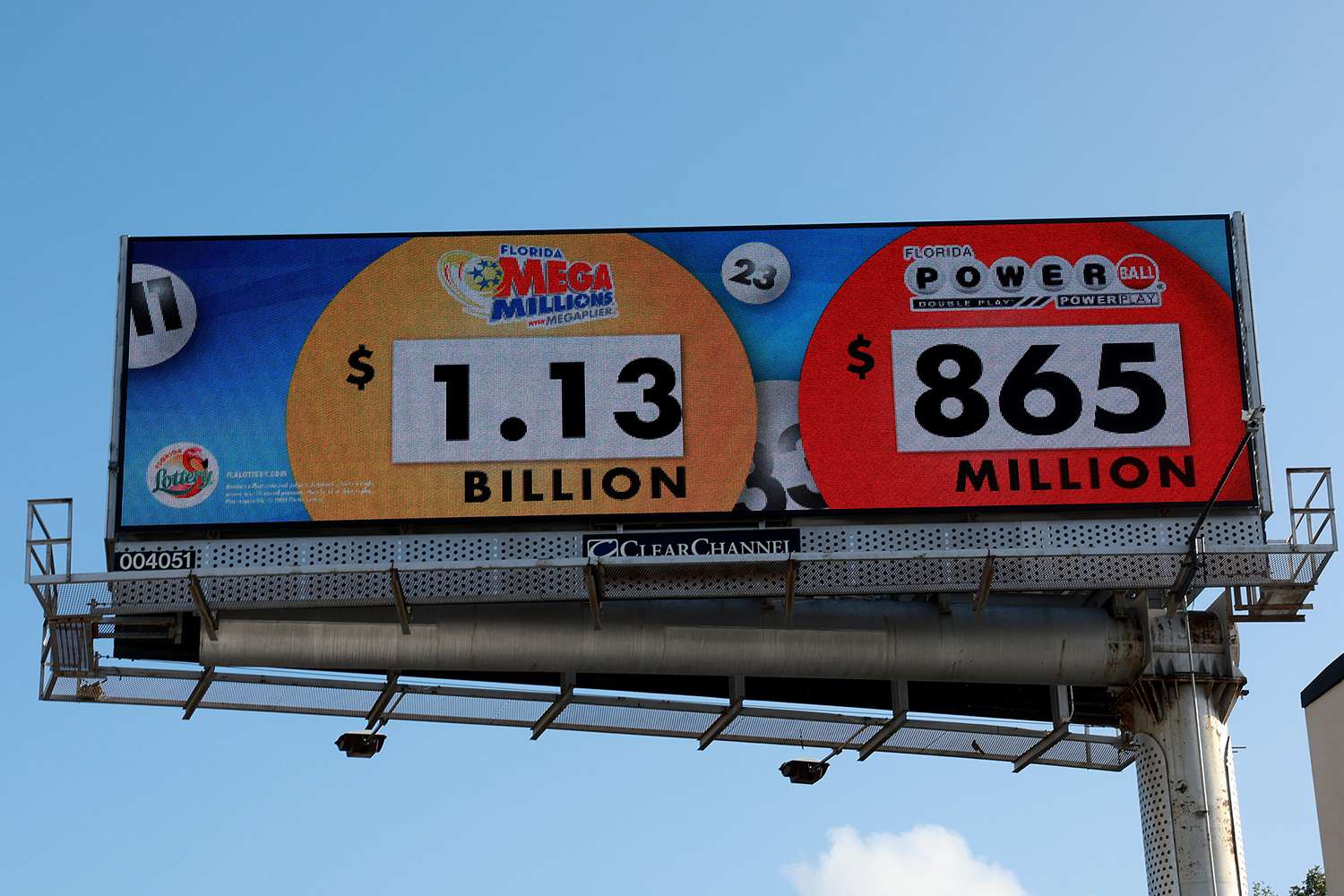The Biden administration announced on Friday that it has finalized tariff increases on specific Chinese-made products, originally introduced by the president in May.
Starting on September 27, tariffs will rise to 100% on electric vehicles, 50% on solar cells, and 25% on electric vehicle batteries, critical minerals, steel, aluminum, face masks, and ship-to-shore cranes, according to the US Trade Representative’s Office.
Additional tariff hikes on products like semiconductor chips are scheduled to take effect over the next two years.
In a related issue, Americans are still paying higher prices for shoes, luggage, and hats, largely because President Joe Biden has left former President Donald Trump’s tariffs in place.
These new tariff increases, while affecting a relatively small portion of US imports, come amid a political clash between Vice President Kamala Harris and former President Donald Trump on tariffs.
Trump is advocating for sweeping new tariffs on all imports, while Harris argues that his proposal would lead to higher costs for American families.
When he was in office, Trump imposed extensive tariffs on approximately $300 billion worth of Chinese products.
President Biden has maintained those tariffs and, following a multiyear review by the USTR earlier this year, decided to increase the rates on around $15 billion worth of Chinese imports.
The items now subject to increased tariffs align with Biden’s broader economic goals, which focus on bolstering domestic manufacturing in sectors like clean energy and semiconductor chips.
“Today’s finalized tariff increases will target the harmful policies and practices of the People’s Republic of China that continue to impact American workers and businesses,” US Trade Representative Katherine Tai said in a press release.
China is expected to retaliate by imposing higher tariffs on US-made goods.
In May, Chinese foreign ministry spokesperson Wang Wenbin expressed opposition to “the unilateral imposition of tariffs, which violate (World Trade Organization) rules,” and said China would take all necessary measures to protect its rights.
On Friday, the Biden administration also announced a new initiative to limit the volume of foreign goods that can enter the US tariff-free if they are valued at $800 or less.
The majority of shipments that use this exemption, known as “de minimis,” come from China, according to the White House.
The administration’s changes to this trade regulation will make some imports ineligible for the exemption, pending a public comment period.
Tariffs have become a significant topic in the 2024 election campaign. While tariffs can be politically popular, many economists argue that they are costly tools that don’t always deliver the promised boost to domestic industries.

Tariffs are designed to raise the price of foreign-made goods to protect domestic producers. Both Democrats and Republicans agree that China has long engaged in unfair trade practices to make its goods more competitive.
However, there are key differences between Trump’s proposed sweeping tariffs and the Biden administration’s more targeted approach.
If re-elected, Trump has vowed to dramatically increase tariffs on imports from all over the world, proposing new duties of up to 20% on every foreign import coming into the US.
To put this in perspective, the US imported $3.2 trillion worth of goods in 2022, according to the latest available data.
Trump has also suggested adding a tariff as high as 60% on all Chinese imports and imposing a “100% tariff” on countries that move away from using the US dollar.
Trump claims that the revenue generated from these tariffs, which is paid by US importers, could be used to lower taxes and fund childcare programs.
Harris, while not providing detailed plans for her stance on tariffs, has repeatedly criticized Trump’s proposal, labeling it a “Trump sales tax.”
She has cited a study from the Center for American Progress Action Fund, a liberal think tank, which estimates that Trump’s proposed tariffs would result in a $3,900 annual tax increase for a middle-income family.
Other analyses suggest smaller increases in household costs under Trump’s proposed tariffs. The Urban-Brookings Tax Policy Center, for instance, estimates that the tariffs would result in an additional $1,350 per year for middle-income households.
Several studies, including one by the bipartisan US International Trade Commission, have concluded that American consumers have shouldered nearly the entire cost of Trump’s tariffs on Chinese goods. When an importer pays a tariff, they often pass some or all of the cost onto consumers.
However, the latest tariff hike—raising rates from 27.5% to 100% on electric vehicles—may not result in a noticeable price increase for US consumers. This is because the US imports a relatively small number of electric vehicles from China.
Although Chinese electric vehicle imports have grown from $7.2 million in 2018 to $388.8 million, they still accounted for only 2% of all US electric vehicle imports, according to the US International Trade Commission.
Nevertheless, US automakers remain concerned that Chinese-made electric vehicles, which can sell for as little as $10,000, could flood the US market.
“China now produces 70 percent of the world’s electric cars – jeopardizing productive investments elsewhere,” the US Trade Representative wrote in a recent report.
The steel and aluminum industries, along with related unions, were pleased with Biden’s decision to consider a tariff hike on steel, which he first mentioned in an April speech at the United Steelworkers headquarters in Pittsburgh.
However, some analysts believe the impact on the US steel industry could be limited, as China represents only a small share of US steel imports.







Leave a Reply